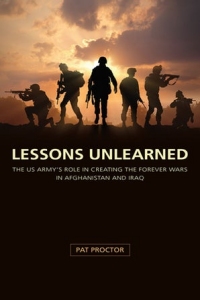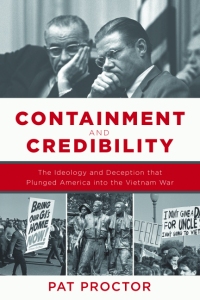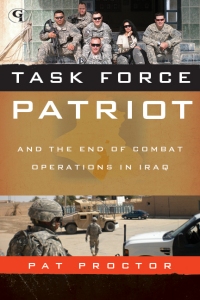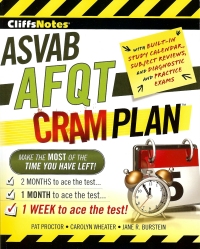|
| |
|

ISBN: 978-0-826-22194-0 |
“The Army claims
that its purpose is to fight and win the nation’s wars. Yet
the past three decades--since the end of the Cold War--have
proven that the Army is only capable of fighting and winning
the nation’s battles. Fighting and winning battles requires
killing people and breaking things to impose one’s will on
an opponent’s military. In these activities, since the end
of the Korean War, the Army has proven itself without peer.
But winning wars requires more than winning battles; it also
requires using violence or the threat thereof to impose
one’s will on an opponent’s government and people. And in
these activities--again, since the end of the Korean
War--the U.S. Army has proven itself largely incompetent.”
Lessons Unlearned: The U.S. Army's Role in Creating the
Forever Wars in Iraq and Afghanistan is a stark
indictment of the senior leaders of the U.S. Army--from the
1990s to today--for its stubborn refusal to acknowledge the
end of the Cold War and prepare itself for the future of
almost exclusively low-intensity conflicts that they
themselves acknowledge was coming. To learn more about
Lessons Unlearned,
click here.
Lessons Unlearned, published by
the University Press
of Missouri was released in February 2020.
|
|

ISBN: 978-1-631-44056-4 |
“In
the shadow of yet another war taking shape in the Middle
East—this time against the Islamic State in Iraq and Syria
(ISIS)—it is vitally important to understand how the
American public is convinced by its leaders to go to war. In
Iraq, in 2003, the Bush administration used a simplistic
ideology (the War on Terrorism) and lies and half-truths
(Saddam Hussein’s supposed nuclear program) to convince the
overwhelming majority of Americans to support the disastrous
invasion of Iraq. Fifty years ago, President Lyndon Johnson
used this same pattern—a simplistic ideology (Cold War
containment) and lies and half-truths (the supposed attacks
by North Vietnam against U.S. destroyers in the Gulf of
Tonkin)—to convince the American people to fight a war in
South Vietnam that eventually cost over 50,000 American
lives. During the Vietnam War, however, the President’s lies
and half-truths ultimately doomed his war policy.”
Containment and Credibility: The Ideology and Deception
that Plunged America into the Vietnam War is a
compelling account of the domestic political debate over the
Vietnam War. It follows the evolution of the argument
between successive administrations, the press, academia, the
Congress, and antiwar activists as they struggled to move
public opinion about the war. To learn more about
Containment and Credibility,
click here.
Containment and Credibility, published by
Carrel Books (an imprint of
Skyhorse
Publishing),
was released in November 2016.
|
|

ISBN: 978-1-605-90777-2 |
“Iraq in 2009 was a strange
netherworld, not quite war but not yet peace. The country teetered on the
threshold of great change--the impending national elections and the promised
withdrawal of all US combat forces. These changes would usher in either an
era of irreversible stability or a return to the sectarian carnage that
nearly destroyed Iraq in 2006. It was during this period of uncertainty that
Task Force Patriot arrived to take over as the last US combat force to
occupy Saddam Hussein’s hometown of Tikrit.”
Task Force Patriot and the End of Combat Operations in
Iraq Tells the story of an artillery-turned-infantry
battalion that arrived in Iraq in late summer 2009 to take
over as the last US combat force in Saddam Hussein’s
hometown of Tikrit and its eleventh-hour struggle to
overcome resistance from insurgents, intransigent Iraqi
politicians, and, occasionally, the US interagency team to
solve the last unsettled problem of the Iraq war, the
sectarian divide. To learn more about Task
Force Patriot,
click here.
Task Force Patriot, published by
Government Institutes Press (an imprint of
Rowman & Littlefield),
was released on 15 December
2011.
|
|

ISBN: 978-0-615-43267-0 |
In
Operation Iraqi Freedom, insurgent and terrorist groups have
demonstrated the capability to use small, relatively insignificant
tactical attacks, amplified through the megaphone of the media, to
dramatic effect on the will of the American public to prosecute the
war. This capability has neutralized the overwhelming advantage the US
military has in firepower in Iraq by bypassing it completely. Recent
trends (including Israel’s abortive war in Lebanon in 2006) suggest that
this capability is proliferating and will characterize every enemy the
US military faces for the foreseeable future. Left unchecked, this
capability will weaken the United States’ ability to project military
power for all but the most finite, decisive future conflicts.
This is
ProSIM's first e-book title and Pat's first full-length
book. This book is the culmination of over two and a half
years of study of the US military, the insurgency, and the
media in Iraq, including lessons learned from Pat's first
six-month tour in Iraq working on the front lines of the
media war. Media War: The
Media-Enabled Insurgency in Iraq is available in two
convenient formats.
In addition to the
Kindle itself, Amazon Kindle software is also
available
free for your PC. This software is also
available as a free app on a number of other
devices, including the iPhone and Android-based
devices.
Google eBooks, once purchased can be viewed from
any device. On your PC, the book is viewed via
your web browser without any special software.
Google Books also offers a free app on a number of
other devices, including the iPhone and
Android-based devices.
|
|

ISBN: 978-0-470-59889-4 |
So,
you’ve decided to serve your country. Before you can raise
your hand and swear an oath to support and defend the
Constitution, there is one big hurdle in your path, the
Armed Services Vocational Aptitude Battery (ASVAB). You must
especially do well on the Armed Forces Qualifying Test (AFQT),
the four key subtests of the ASVAB that the services use to
measure you against your fellow recruits.
First, you'll determine exactly how much time you have left
to prepare for the exam. Then, you'll turn to the two-month,
one-month, or one-week cram plan for week-by-week and
day-by-day schedules of the best way to focus your study
according to your unique timeline.
To see an excerpt, click
here.
Buy it at any of these great retailers!
|
|
|
